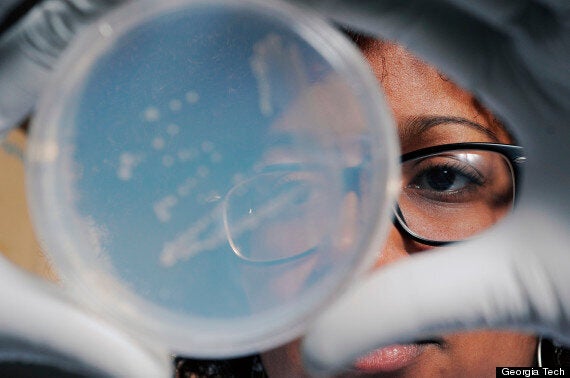
Planet Earth is surrounded by a bubble of live bacteria scientists have found.
According to a report by Popular Science the colonies of bacteria live at about 33,000 feet - roughly the cruising height of a passenger jet.
But while it might sound strange, it appears the phenomenon is a crucial part of the ecosystem in which we all live.
Scientists from Georgia Institute of Technology found that despite the atmosphere at that height being relatively thin, lacking in oxygen, freezing cold and high in UV radiation, bacteria are able to happily survive at that height.
The team reportedly flew a Nasa jet up to six miles above the Earth, and then collected particles from outside the plane.
Instead of finding a small number of living bacteria, as they had expected, they actually turned up a huge number of organisms.
Up to 20% of the particles they expected to be dust was actually living bacteria.
"We did not expect to find so many microorganisms in the troposphere, which is considered a difficult environment for life," said Kostas Konstantinidis, an assistant professor at Georgia Tech.
The team found that the types of bacteria corresponded to the environment at sea level. If the team was flying above the sea, it tended to find marine bacteria. Above land, it found bacteria familiar to land environments.
"There seems to be quite a diversity of species, but not all bacteria make it into the upper troposphere."

Above: Georgia Tech graduate student Natasha DeLeon-Rodriguez shows an agar plate on which bacteria taken from tropospheric air samples are growing.
The team isn't sure what the bacteria are doing that high in the atmosphere, but they do think that they play a role in how the entire system works. It is possible that bacteria may recycling nutrients as they do on the ground, and they might even be able to influence the formation of clouds - and so the weather we experience on the surface.
New research is ongoing, however. A team at the University of Oregon said in January that understanding how microbes in the atmosphere work may be able to one day lead us to new techniques to combat climate change.
"If bacteria could reduce the number of high level clouds, it would allow more heat to go into space," said senior author Athanasios Nenes at Georgia Tech.
"We have demonstrated that our technique works, and that we can get some interesting information. A big fraction of the atmospheric particles that traditionally would have been expected to be dust or sea salt may actually be bacteria. At this point we are just seeing what's up there, so this is just the beginning of what we hope to do."